#extant garments
Text
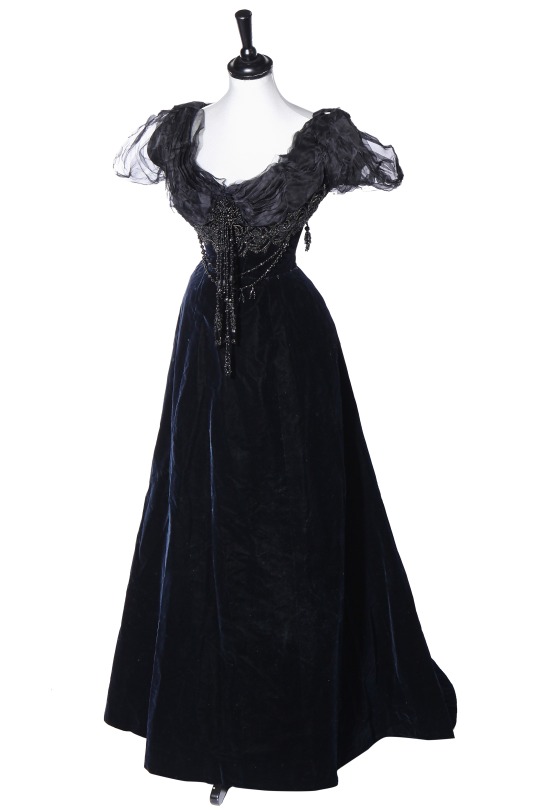


Evening dress ca. 1905
From Kerry Taylor Auctions
4K notes
·
View notes
Text

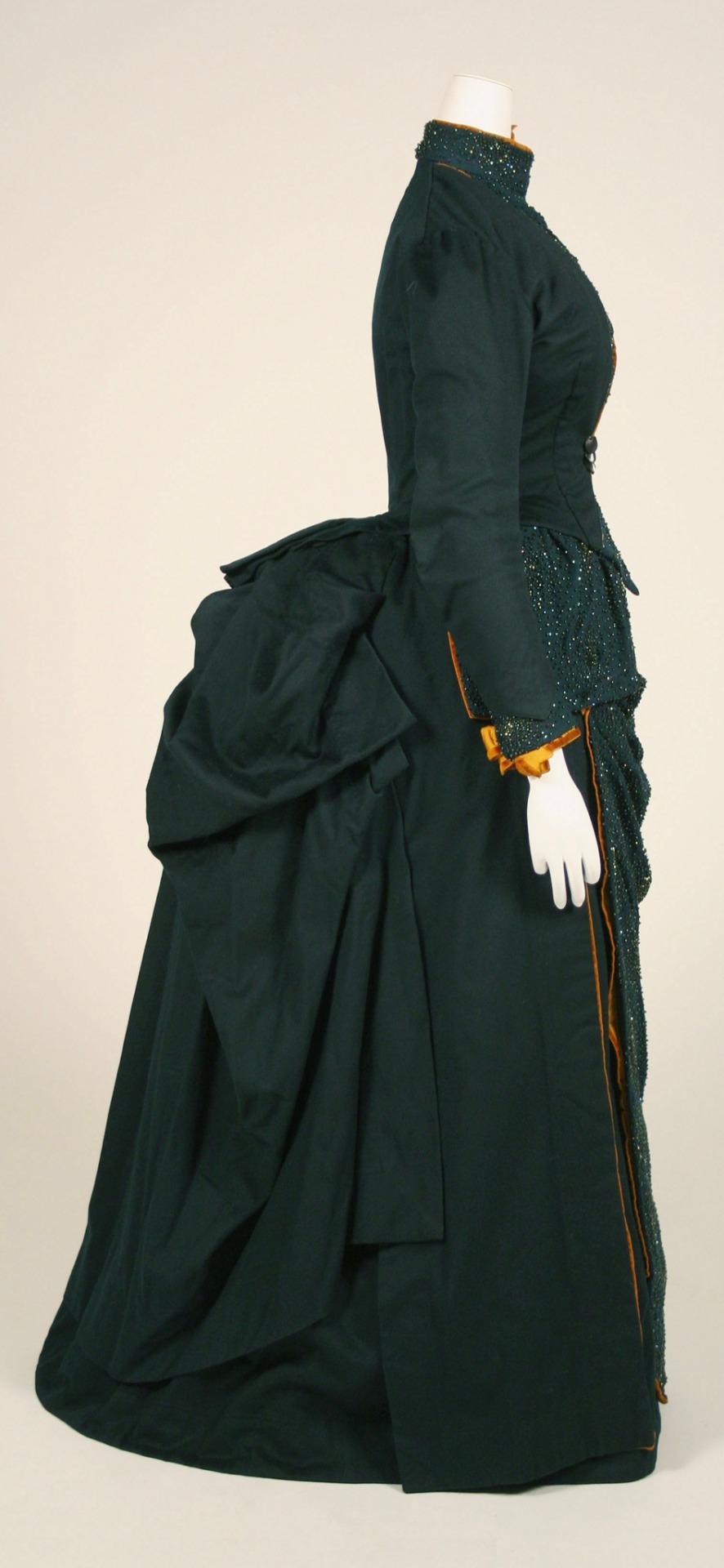

Green wool dress, ca. 1887, American.
Designed by Catherine Donovan.
Met Museum.
#Catherine Donovan#green#womenswear#extant garments#dress#silk#wool#19th century#met museum#usa#1880s#1887#1880s dress#1880s usa#1880s extant garment
1K notes
·
View notes
Text



Met Costume Institute
Walking dress. British. ca. 1830
#fashion history#historical fashion#antique#1800#1830s fashion#1830s#extant garments#met museum#floral#this is my absolute favorite 1830s dress but I don't know if it's been posted before
546 notes
·
View notes
Note
Not sure if it's the same one or just a very similar one, but the dressing gown that inspired yours is currently on display in the Powerhouse museum in Sydney! The colours aren't accurate since my phone likes to oversaturate things :(

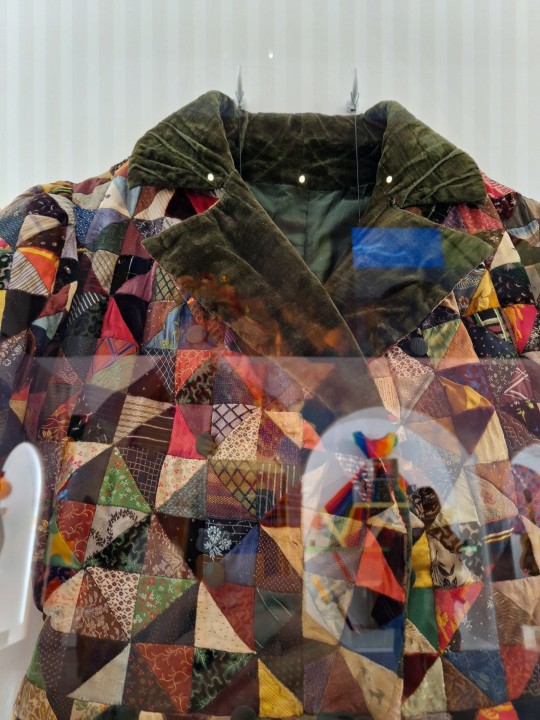
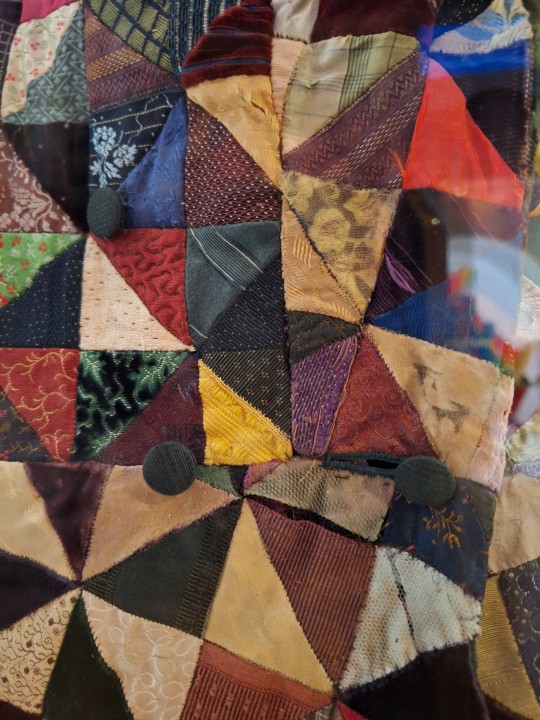
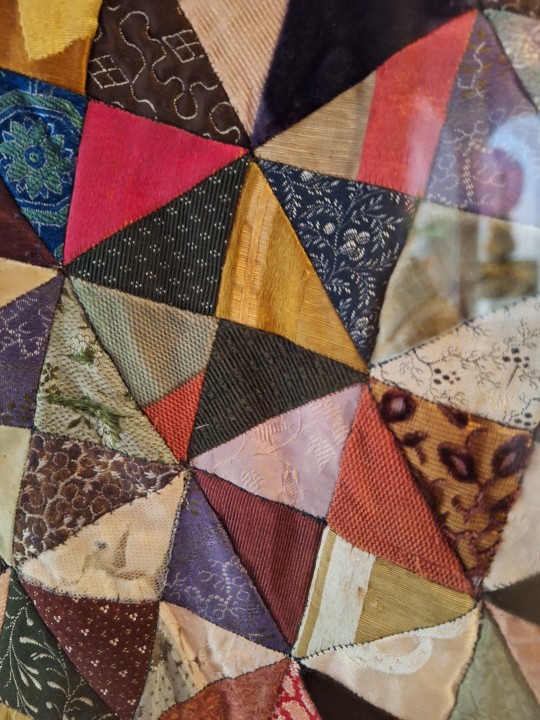
Yes, that's the one!! Thank you for the closeups! It's neat to see that some of the damaged triangles have conservation mesh sewn over them, I hadn't seen that in any of the other photos. So many nice woven textures too.
I suppose I ought to add some pictures of my version for anyone who hasn't seen it.



youtube
812 notes
·
View notes
Text

Extremely rare woman's tie in muslin embroidered with blue flowers and branches. Shaped with Ariadne's thread covered with sky blue silk. Identical choker closed by a hook.
1832-1833
3K notes
·
View notes
Text
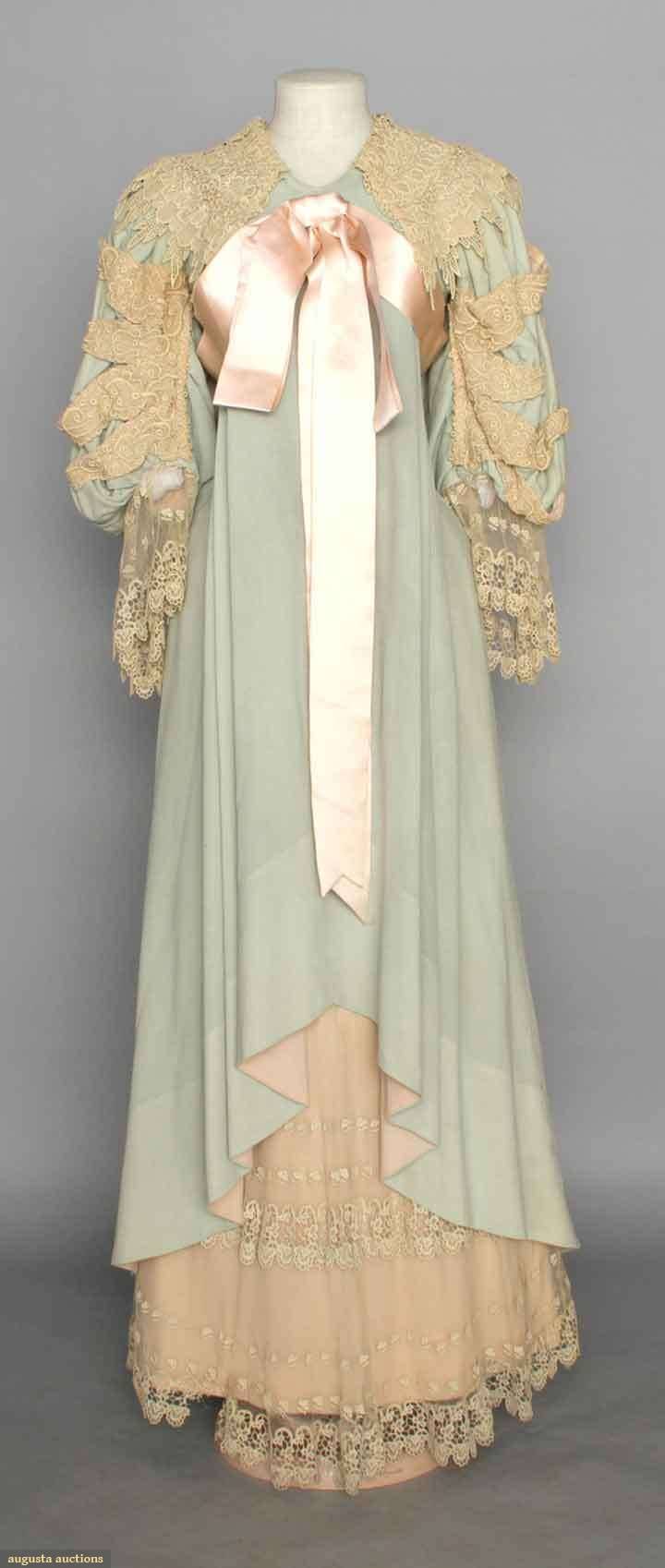

Wool and lace morning gown, c.1895
august auctions
#fashion history#historical fashion#victorian fashion#1890s#1890s fashion#victoriana#edwardian fashion#historical clothing#clothing history#edwardiana#edwardian era#victorian era#19th century fashion#extant garments
773 notes
·
View notes
Text



Right in the middle of the 18th century, we have this absolutely frothy pink gown that screams springtime. Yellow bows? Sign me up!
If there is a timeless shape, I'm willing to bet it's this one. Though this doesn't have quite the volume of some of the dresses in this period, it still endures again in the 1830s and 1840s, the 1870s and 1880s, and then again in the 1950s. A fitted bodice, a 3/4 sleeve, and a flared skirt. Plus that gorgeous scoop neck.
This robe à la française was owned by Mrs. Maria Altenburg of Denmark. It then had some adventures of its own, showing up later in Victorian Era costume parties! So it's likely it's had alterations. Most dresses of this era have.
I love the floral spill and the ribbon details! Really marvelous on every level. I am obsessed.
Source: https://digitaltmuseum.no/021069530963/overkjole-med-skjort
#fashion history#textiles#costume#historical costuming#silk dress#costume history#threadtalk#history of fashion#baroque#rococo#extant garments#georgian fashion#georgian era
854 notes
·
View notes
Text
God I love the internet.
I’m working on a project and I need to figure out how much lace to buy for the hem of said project and was having trouble mathing said hypothetical hem. I found a fabulous person who made an entire blog post about looking at extant garments measurements or paintings and pictures all the way from before the 1600s to the 1930s and estimating their hems.
I’m a person who needs visuals to be able to picture accurately and this is a godsend. Just needed to find a garment whose hem mimics the project hem and convert the inches into yardage.
#reference#for future reference#fashion#sewing#sew last century#extant garments#historical fashion#thaaaank youuuuuuu
319 notes
·
View notes
Text
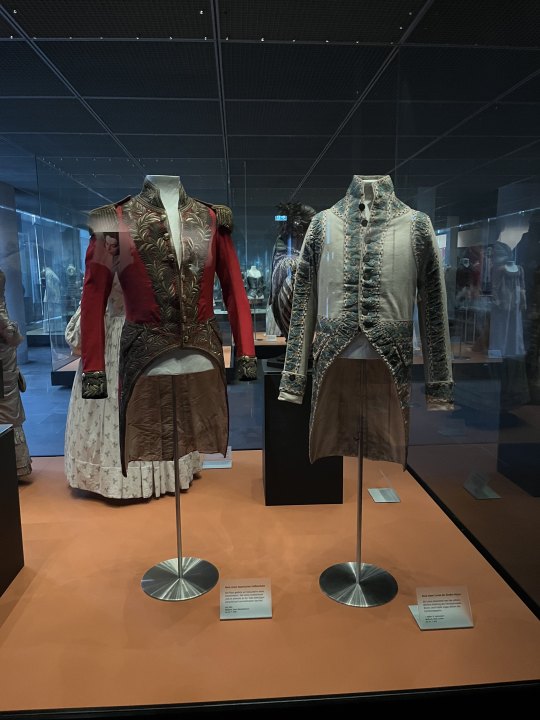
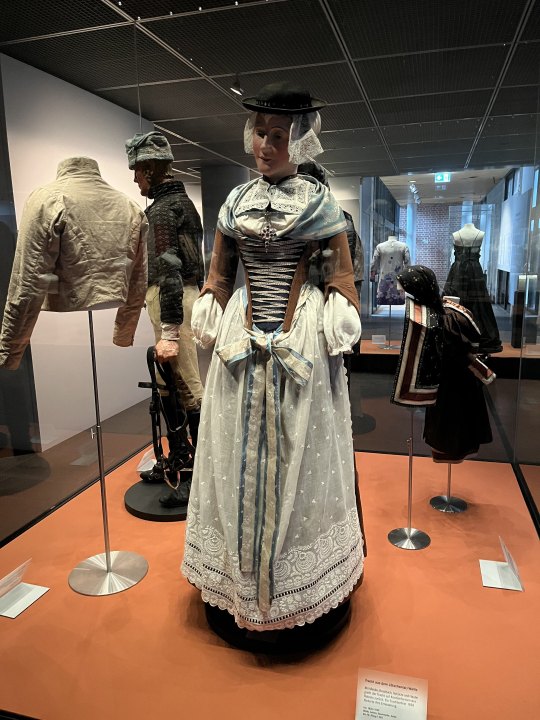

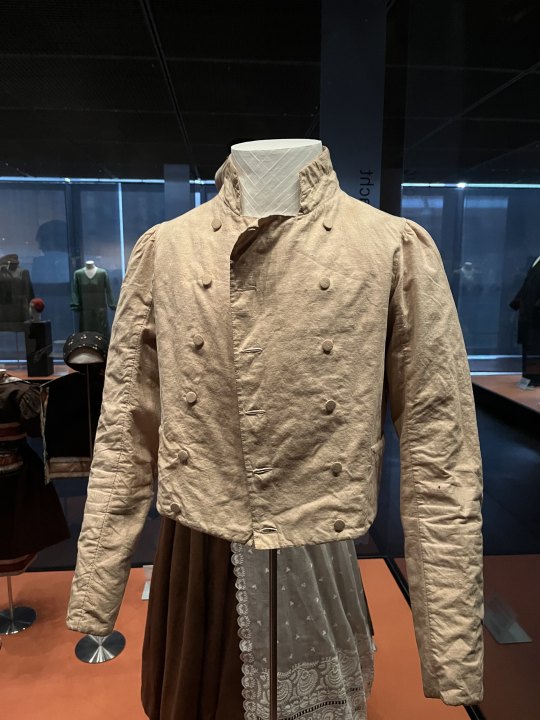
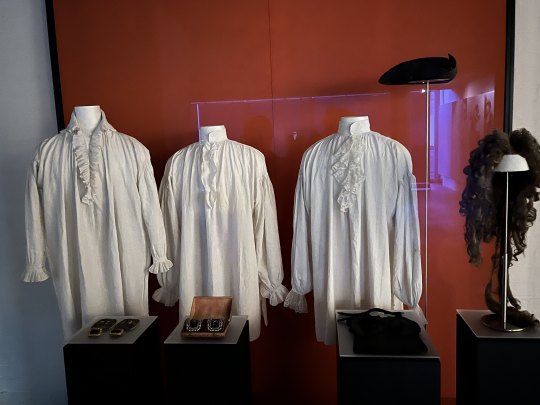



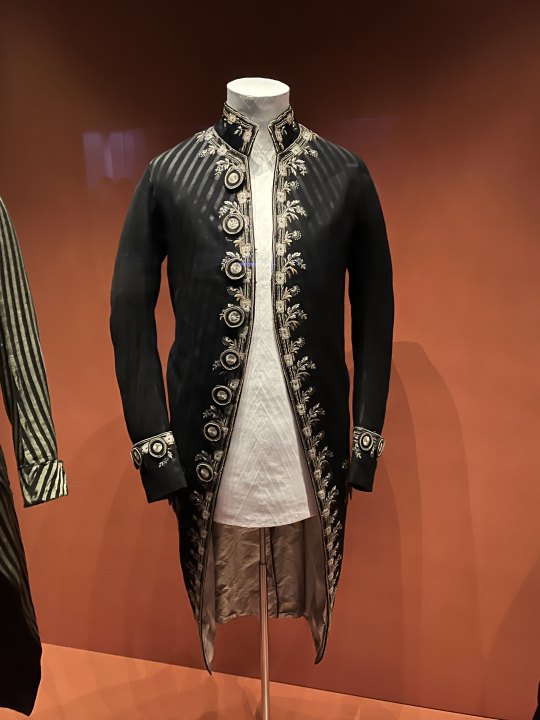

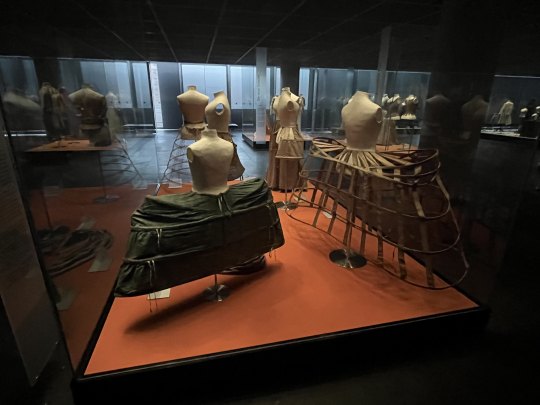
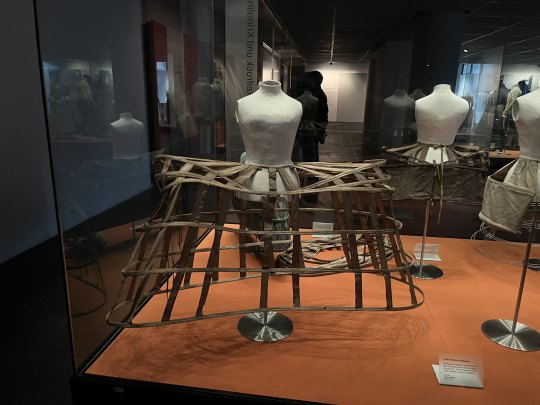
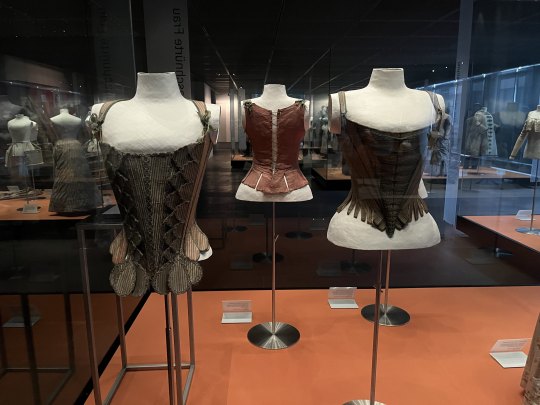

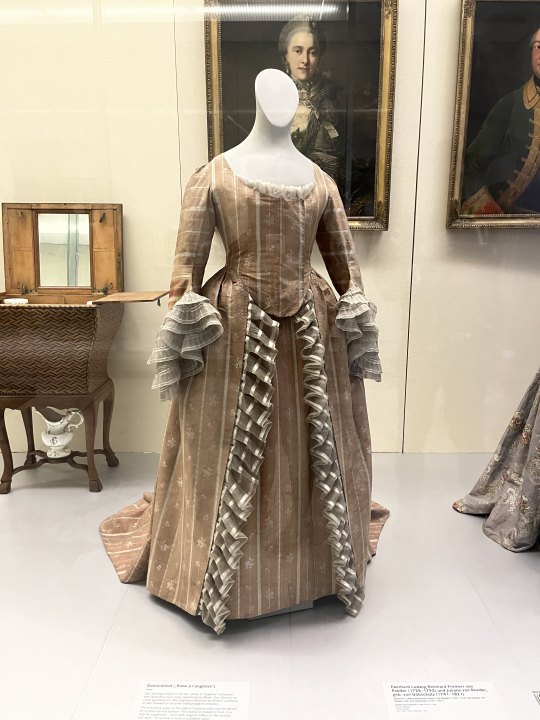
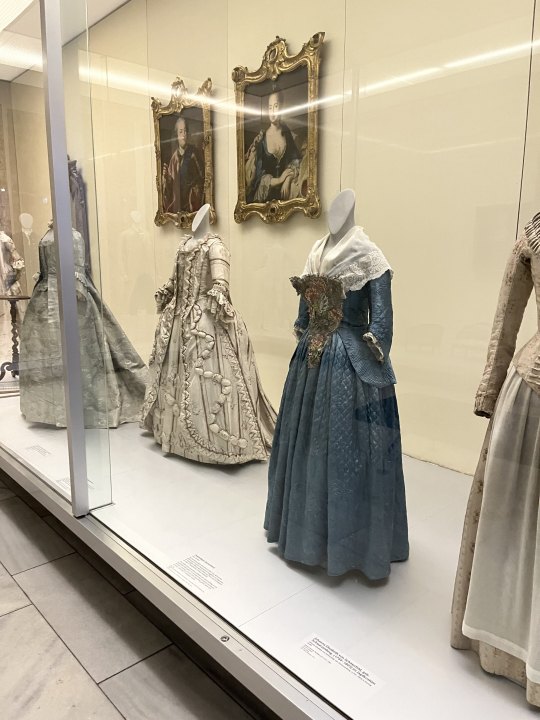
And here, as promised to the dear @vinceaddams come a lot of extant Garments from my recent Visit at the German National Museum in Nuremberg. I am trying to give as much Information about each Picture as I can though unfortunately not all of the Pictures were taken by me and I could take Pictures as extensively (including Info Signs) as I would have wanted, lest I be abandoned in the Clothing Section. Also the whole Section was awfully dim, which made it rather difficult to read some of the Signs. The last three Pictures were taken in a different Section, thus the more pleasant Lighting.
Servant Livery, bavarian Court, mid 19th Century (left); Servant of the Count of Cannotreadhisname, first half 19th Century (right)
Woman's Folkdress, Lötschental/Wallis (Switzerland), Museum dates it 1830/1905 which is an awfully broad Range, but maybe it was altered later; shows wonderfully how late 18th Century Styles were preserved in european Folkdress that came to be in the 19th Century proper
Various Men's Garments throughout the 18th Century, as there are Closeups of each, the respective Detailinformation will be provided further down.
Men's Spencer, c. 1810s-1820s, Linen and Cotton, the Sign didn't say it explicitely but due to it's Placement in the Exhibition and comparable other Pieces I have seen, I think this is more of a common Man's Piece of Clothing.
Three Men's Shirts, various Shoebuckles, a cocked Hat, a Periwig and what I assume to be a Hair Bag. This Display Case had a rather badly illuminated Sign, so sadly I have no further Details about the Pieces.
Justeaucorps, c. 1695, Wool, Silk, Metal Trim.
Waistcoat, c. 1695, Silk, according to the Museum it was worn together with the Justeaucorps, which seems to be a nice Colour-Combination.
Breeches, 1790-1800, Silk. Very pretty Pair, but the bad Lighting doesn't really let it show.
Habit à la francaise, c. 1790, Wool, Silk, Embroidery (What a Material Specification...). I really like the Combination of those subtle dark on dark Stripes and the Embroidery.
Tailcoat, c. 1790/1795, Cotton, Silk, Linen, really peak 1790s Look honestly.
Very wide Court Panniers, with Pocket Hoops and Crinoline in the Background. Alas no Detail Information for this and the next two Pictures.
Frontal View of the Pannier. I suppose I have to get one of those at some Point, if only for how extra they are.
Three Pairs of Stays, two from the Front, one from the Back. Sadly I don't feel confident enough to Date those and I have no Pictures showing the Info Signs well enough.
Lots of pretty Dresses that were exhibited in another Section of the Museum. The right one is a Robe à l'Anglaise, but that's all I can tell.
Another beautiful Anglaise, notable for being preserved in its Entirety with original Ruffles.
More pretty Dresses. Unfortunately due to Time Reasons I have no Pictures of the Suits displayed across the Dresses in the U-shaped Display, though I have to say one of them had a very much not authentic Lacebib hanging from the Neck...
That's all the cool Clothing Pics I have, at some Point I will return and take loooots more Pictures from all the Angles too. Also at some Point I might write to the Museum about the Lighting, there surely is a better Solution when having your Objects barely visible with unreadable Signs while still protecting them from UV-Rays.
Bonus-Pic 1:

Me, in historical Dress, c. 1750 (minus the Shoes), standing in a historical Kitchen.
Bonus-Pic 2, for the Boat-Crowd:
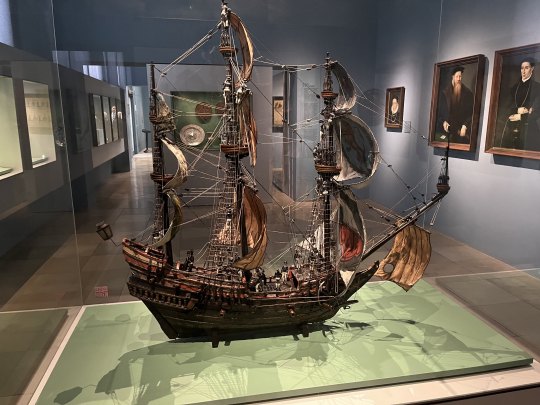
Beautifully detailed Modell Sailing Ship, early to mid 17th Century if I remember correctly. Interestingly enough all the little Sailor Figurines on it were very much early 19th Century in Style, so I assume the previous owner had those added at some Point, before the Museum acquired the Model in the late 19th Century. (The Incongruence sadly wasn't addressed on the Info Sign, so I might contact them about this too.)
#Aus dem Leben einer Taugenichts#Extant Garments#Historical Fashion#Germanisches National Museum#18th Century#19th Century#Museum
156 notes
·
View notes
Text

1930s evening ensemble
Every piece is vintage except for my socks, and I bought them all separately across the country over two years. Almost everything required repairs.
The jacket had damaged sleeve lining which I replaced. One of the front buttons had bent and busted off, and was placed in a pocket. It’s roughly 1930s I think. The company was Foreman & Clark Clothes, “Upstairs from coast to coast”.
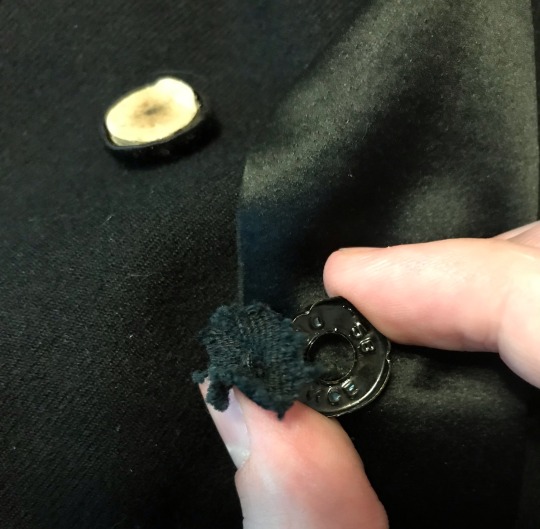
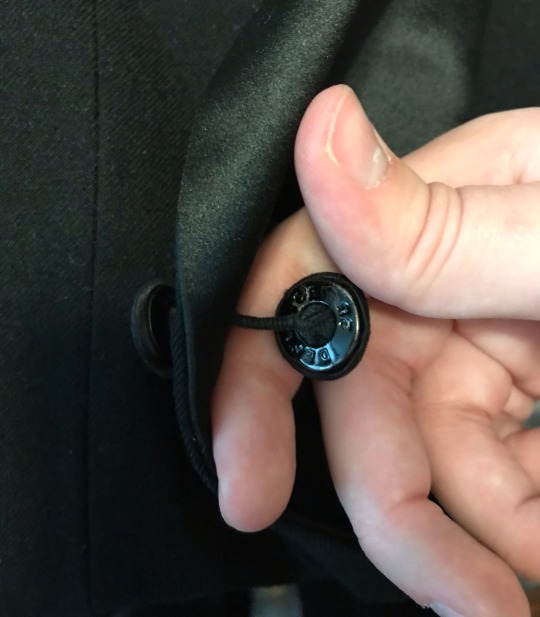
The trousers are Basil Durant Inc. New York. Most likely 1930s as well. Basil Durant was a vaudeville actor who started a tailoring business after vaudeville’s decline. It has silk lining on the trousers which had to be restitched.

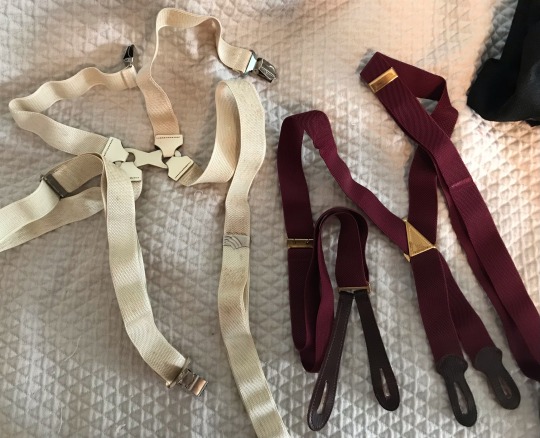
1940s/30s? Red Suspenders. I’m honestly not as sure on the date for these, but they are in perfect condition. Bonus picture of Paris Swing suspenders about 1930s or 40s.
Paris garters 1930s or 40s.
1910s/1920s vest. It was heavily yellowed from starch which came out with gentle hand washing. Unknown maker
1920s/1930s evening shirt. This one probably had the worst damage since I know it was used by costumers/actors. The second buttonhole was completely opened and ravelled. Various stains and pinholes. I had to rebound the buttonhole.
1900s-1920s collar
Silk scarf about 1940s.
1970s Floreshime shoes.
1890s-1910s watch fob.
#1930s#1930s menswear#historical fashion#extant garments#formal wear#tuxedo#historical men's fashion#menswear#vintage menswear#vintage
157 notes
·
View notes
Text

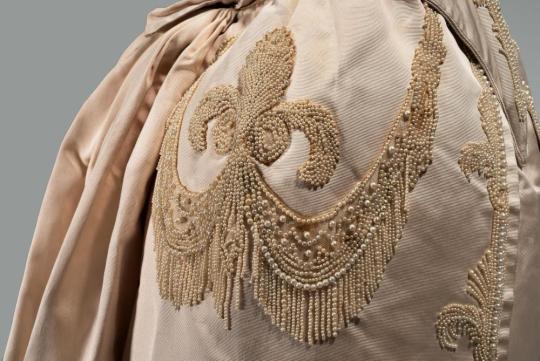
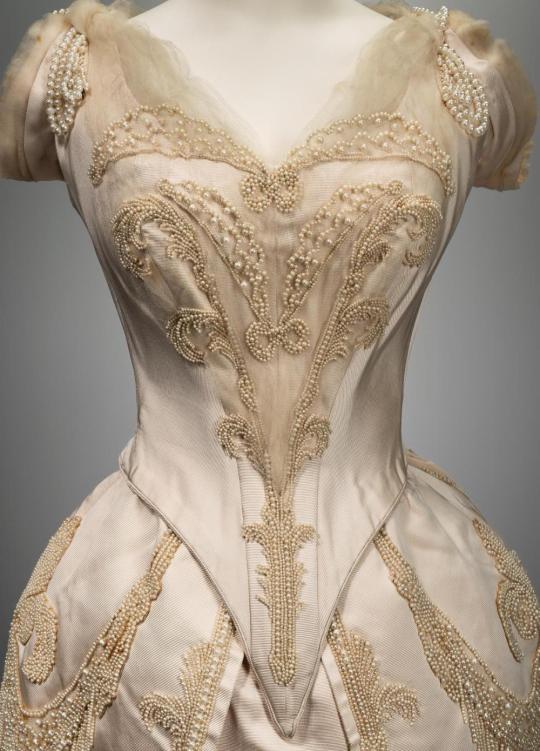
Evening dress by the House of Worth ca. 1880
From MFA Boston
2K notes
·
View notes
Text

Pink Silk Carriage Boots, 1890-1895.
By Marshall Field, Inc.
Albany Institute of History & Art.
#Marshall field Inc.#womenswear#carriage boots#boots#1890#1890s#1890s boots#1890s shoes#extant garments#1890s extant garment#pink#fur#silk#19th century#Albany institute
1K notes
·
View notes
Text



Title: Evening dress
Design House: House of Worth (French, 1858–1956)
Date: 1898–1900
Culture: French
Medium: silk, cotton
#historical fashion#fashion history#house of worth#evening dress#extant garments#1890s fashion#late victorian fashion#late victorian era
378 notes
·
View notes
Text


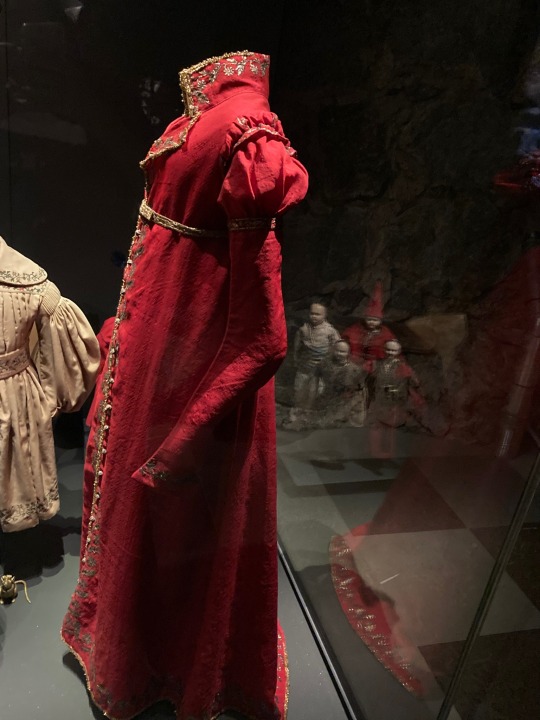
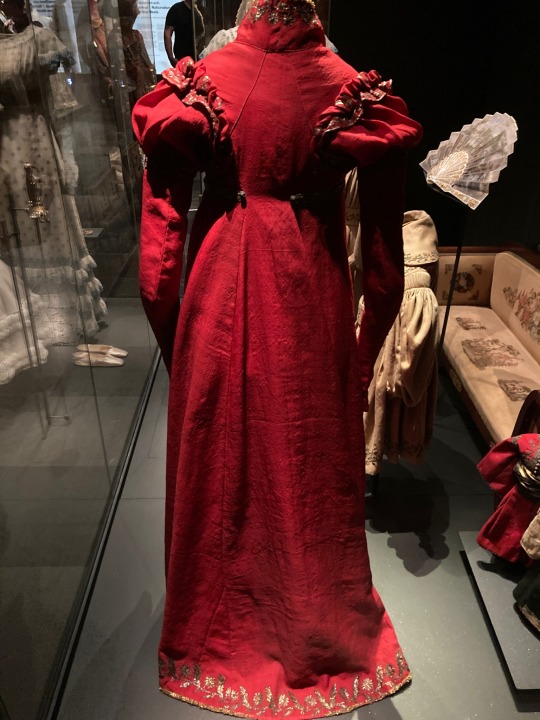


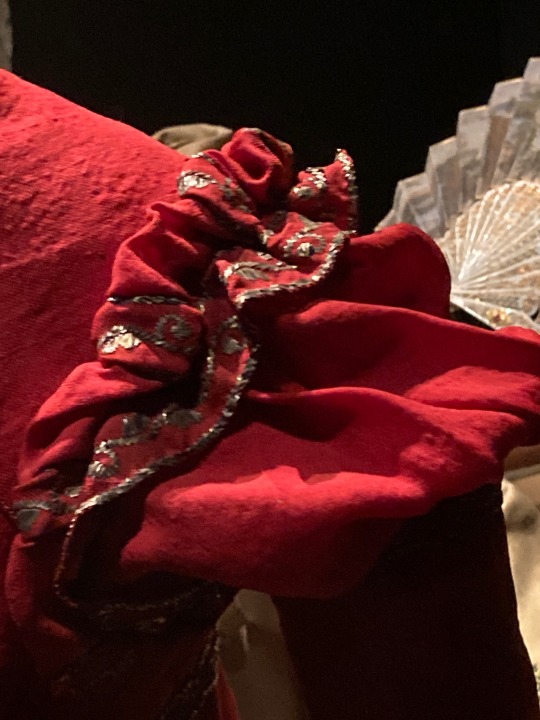
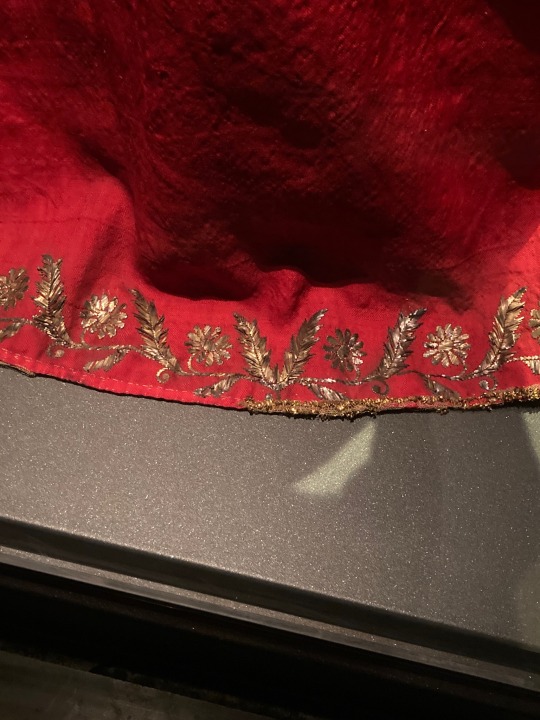

Crown Princess Josefina's Red Redingote With Small Gold Wire Buttons
Circa 1810s
The Royal Armoury
Stockholm, Sweden
#redingote#extant garments#1810s fashion#empire fashion#gold embroidery#gold buttons#crown princess josefina#royal armoury#stockholm#sweden
108 notes
·
View notes
Text
Wedding Bonnet Wednesday

This ca.1845 English wedding bonnet is from the V&A collection.
Description from the V&A website:
"Cream silk tulle bonnet trimmed with bands of white crepe and sprays of imitation orange blossom, coal scuttle shape"
Orange blossom was especially popular among Victorian brides after featuring prominently in Queen Victoria's wedding attire.
Wedding Bonnet | Unknown | V&A Explore The Collections (vam.ac.uk)
#19th century fashion#wedding fashion#fashion history#wedding history#bonnet#1840s#orange blossom#millinery#artificial flowers#extant garments#historic headwear
87 notes
·
View notes
Text


Lace and ribbon flower tea gown, c.1912
augusta auctions
#historical fashion#fashion history#edwardian fashion#clothing history#historical clothing#extant garments#1910s#1910s fashion#1910s dress#1910s style#edwardian era#edwardiana#20th century fashion#e
362 notes
·
View notes